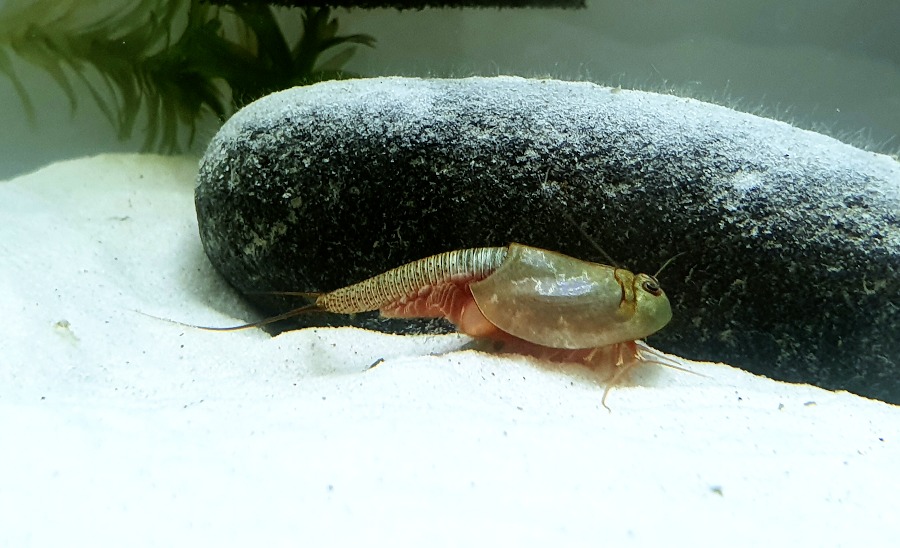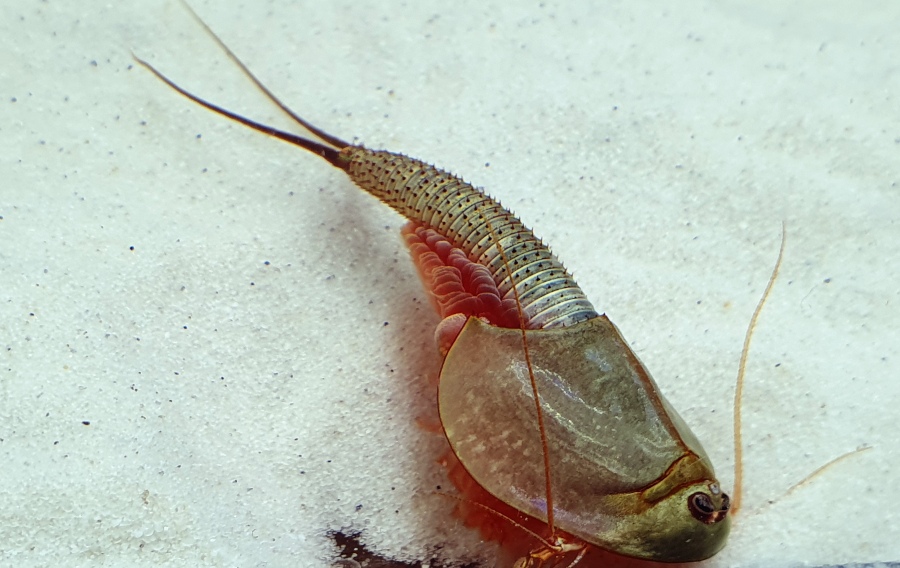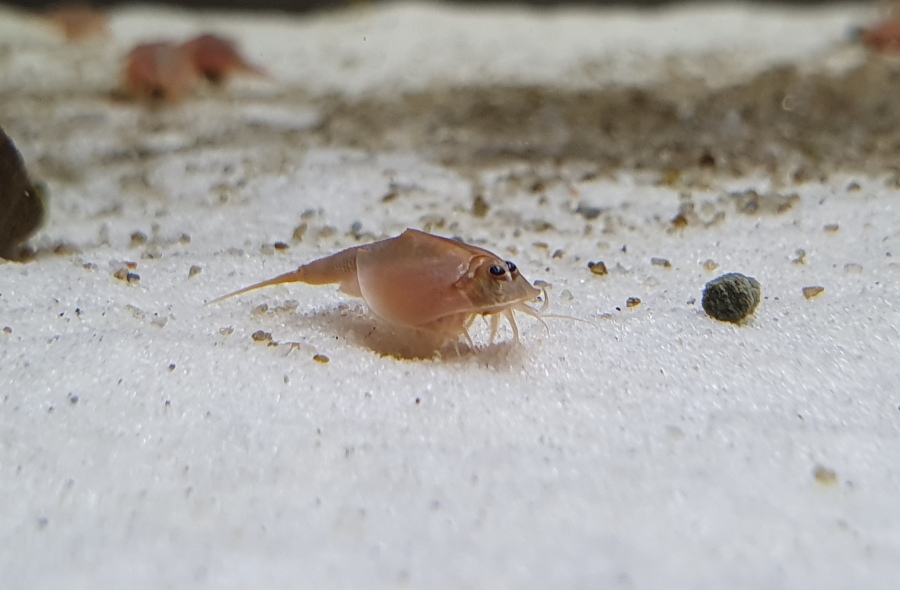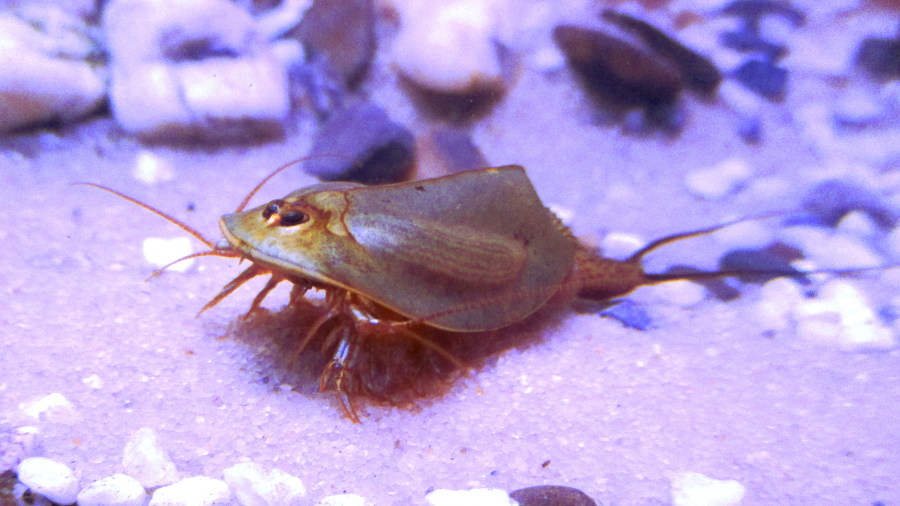Guide
Triops species: These types of prehistoric crabs exist
Which Triops species are there? Among the different Triops species as well as subspecies, Triops longicaudatus and Triops cancriformis have been scientifically studied in more detail, so that more is known about these primeval crayfish species. For beginners in Triops breeding it is important to know that Triops longicaudatus is the most common species and is recommended for beginners. Most commercially available breeding kits contain eggs from this species. The “Longi”, as the American species Triops longicaudatus is called, is, as the name suggests, common on the American continent. With Triops cancriformis we have a European species, but unfortunately it is less common in Central Europe and especially in Germany. Which Triops species are there? In the following I present the most common Triops species.

Triops species: Triops longicaudatus
Probably the most popular and most represented species in domestic breeding and private aquariums is the American species Triops longicaudatus. I myself started with the “longis” as a breeder. Its distribution stretches from the north of the American continent across the Caribbean to South America. Characteristic for its appearance is the light brown colour of the carapace. The “Longi” reaches a size of five to seven centimetres and is smaller than the European Triops species Triops cancriformis. A temperature of 25 to 28 degrees Celsius is optimal for breeding.

Prehistoric crab species: Triops longicaudatus red
A very beautiful specimen among the Triops species is Triops longicaudatus red or Triops-red longicaudatus. A genetic defect gives it its red colour, which is produced by its own blood. Triops longicaudatus red is an albino species of Triops longicaudatus and is only found in aquarium breeding. In the wild you will search for it in vain. Since this Triops is related to Triops longicaudatus, both can be kept together in one tank.

Triops cancriformis
Among the prehistoric crayfish species, the species Triops cancriformis is represented in Europe. This Triops likes the warmth and is found mainly in southern Europe and less in central Europe. Triops cancriformis is found in waters with a muddy-sandy bottom and in flooded rice fields. In Germany, the species is found near Ingolstadt in Bavaria and in the Lüneburg Heath. There it is found in larger puddles and pools, e.g. in flooded tank tracks on former military training areas.

Triops granarius
Among the Triops species, Triops granarius is often called “the Asian Triops” because it is found in China and Japan. Of all the prehistoric crab species, it has the largest distribution area. The Triops has a dark brown colour and reaches a size between six and ten centimetres. In contrast to the species Triops longicaudatus, in which self-fertilisation (autogamy) of the females occurs and the proportion of these is very high, these Triops reproduce sexually. The proportion of males is relatively high at a good 40 percent, so this makes domestic breeding difficult. The species Triops granarius is not recommended for beginners.
Triops australiensis Ayers Rock
As the name suggests, this Triops species is a species that is found in tropical-subtropical areas such as Australia. However, Triops australiensis are also found in Madagascar. As with other heat-loving Triops species, Triops australiensis likes it warm and prefers temperatures between 27 and 31 degrees Celsius. This species is common in smaller standing waters. Triops australiensis grow up to ten centimetres in size, have a silvery-grey to greenish body colouration and grow much faster than other primeval crab species.
Triops newberryi
The Triops newberryi is another American species, named after the place of the same name in the United States. Triops newberryi is a rather rare Triops species and thus belongs to the exotic species. Its distinguishing features include the dark brown marbling and the mackerel pattern of the carapace. It is a slow-growing prehistoric crab and prefers temperatures between 27 and 31 degrees mag. The Newberryi reaches a size between five and nine centimetres.
Triops Beni kabuto ebi Albino
The Triops beni kabuto ebi albino comes from Asia, mainly Japan, and is related to the European species Triops cancriformis. Due to a genetic defect, it is an albino form of the cancriformis. Like Triops longicaudatus albino, the reddish appearance is caused by the red blood pigment haemoglobin. The red blood shines out through the transparent body and gives it this magnificent colour. Among the Triops species, cannibalism does not occur often in Beni kabuto ebi albino, so breeding is easier than in other prehistoric crayfish species. Characteristic is its short tail, which makes the Triops one of the smaller prehistoric crabs with a size of four to five centimetres. It prefers temperatures between 22 and 25 degrees Celsius and can also be bred without a heater.
Other Triops species
There are many other primeval crab species and corresponding subspecies. Other species are:
- Triops longicaudatus intermedius, also called T. Australiensis Queensland
- Triops granarius numidicus
- Triops mauritanicus
- Triops simplex
- Triops baeticus
- Triops emeritensis
- Triops gadensis
- Triops vicentinus
- Triops maximus
- Triops multifidus
- Phallocryptus fahimii (2017 discovered)